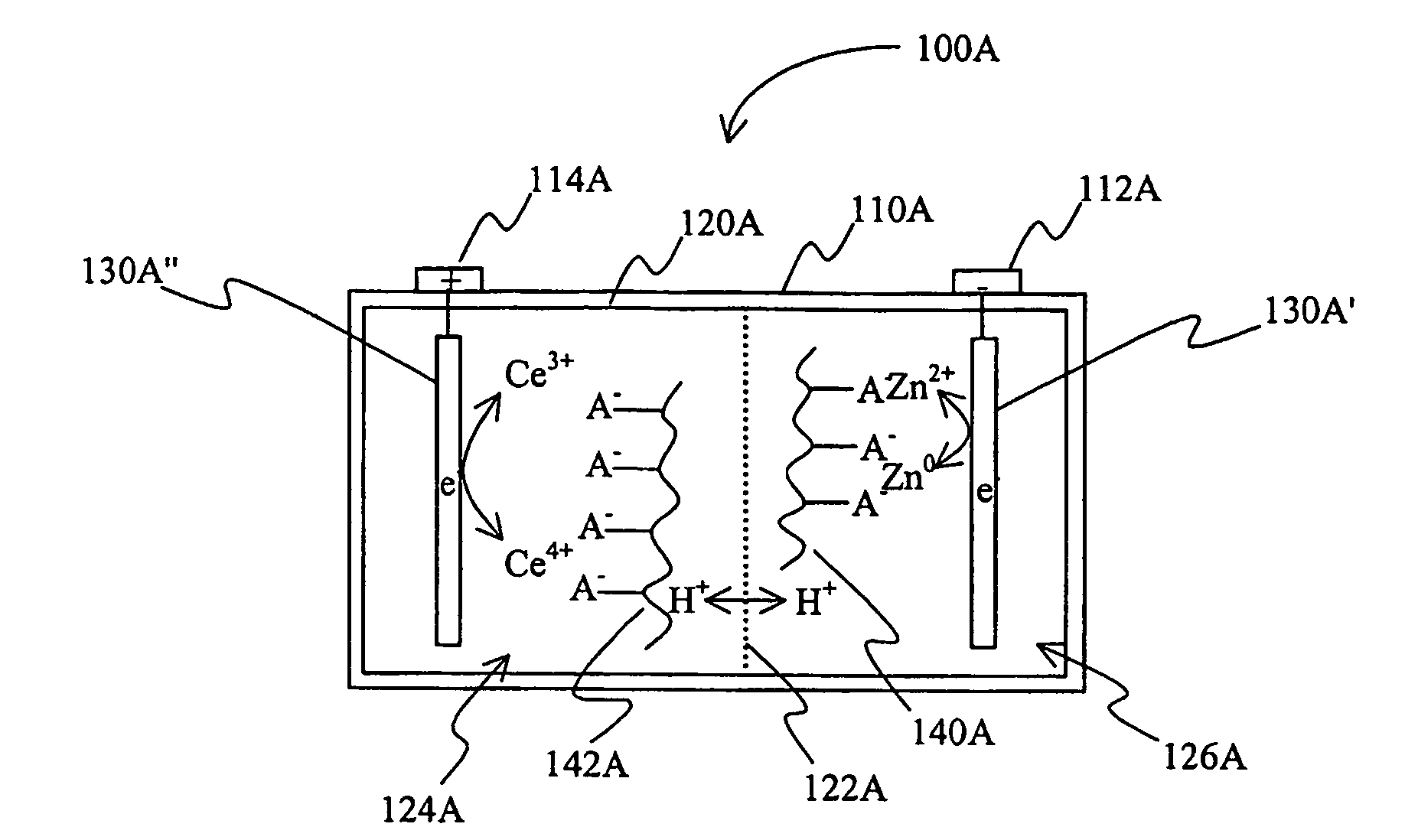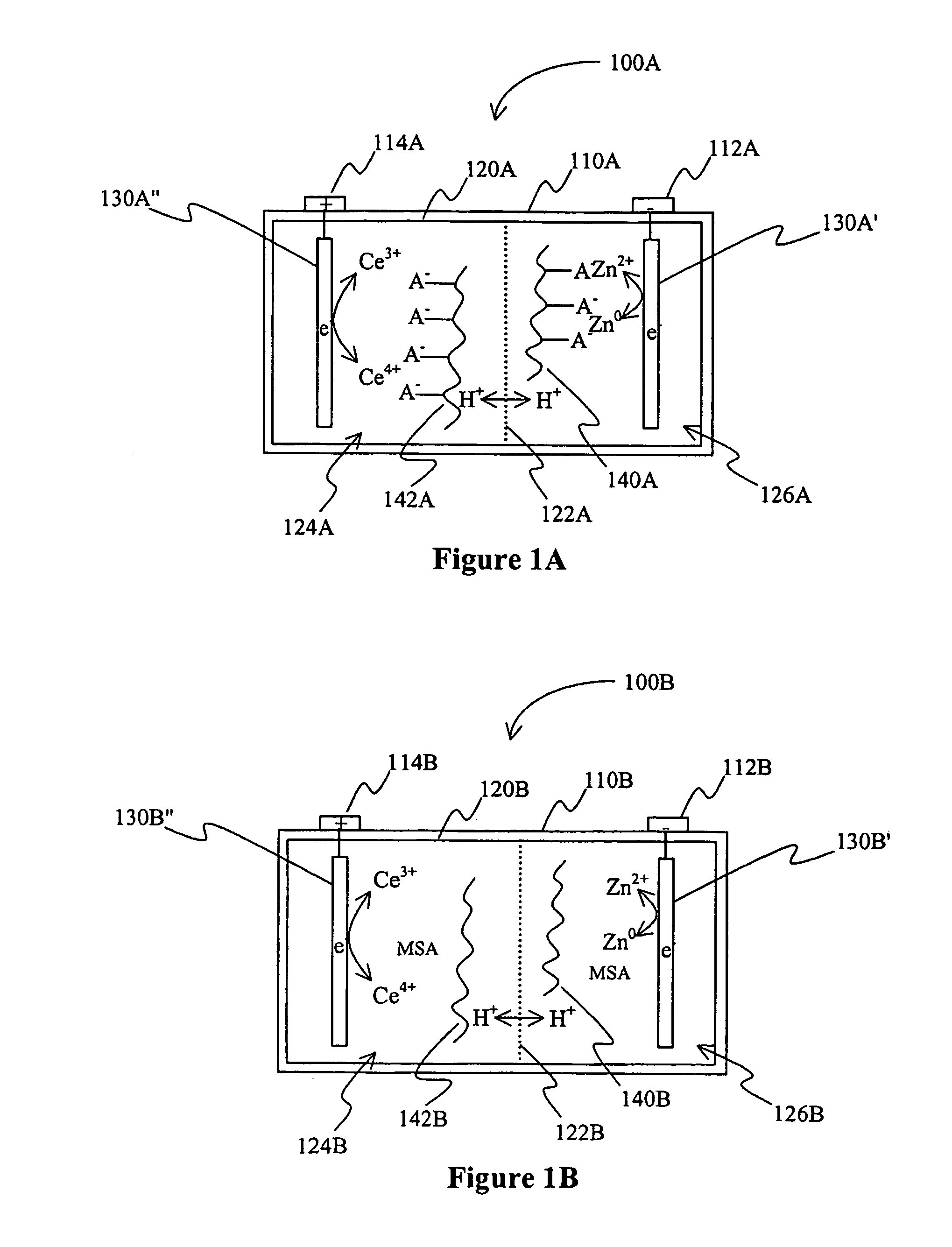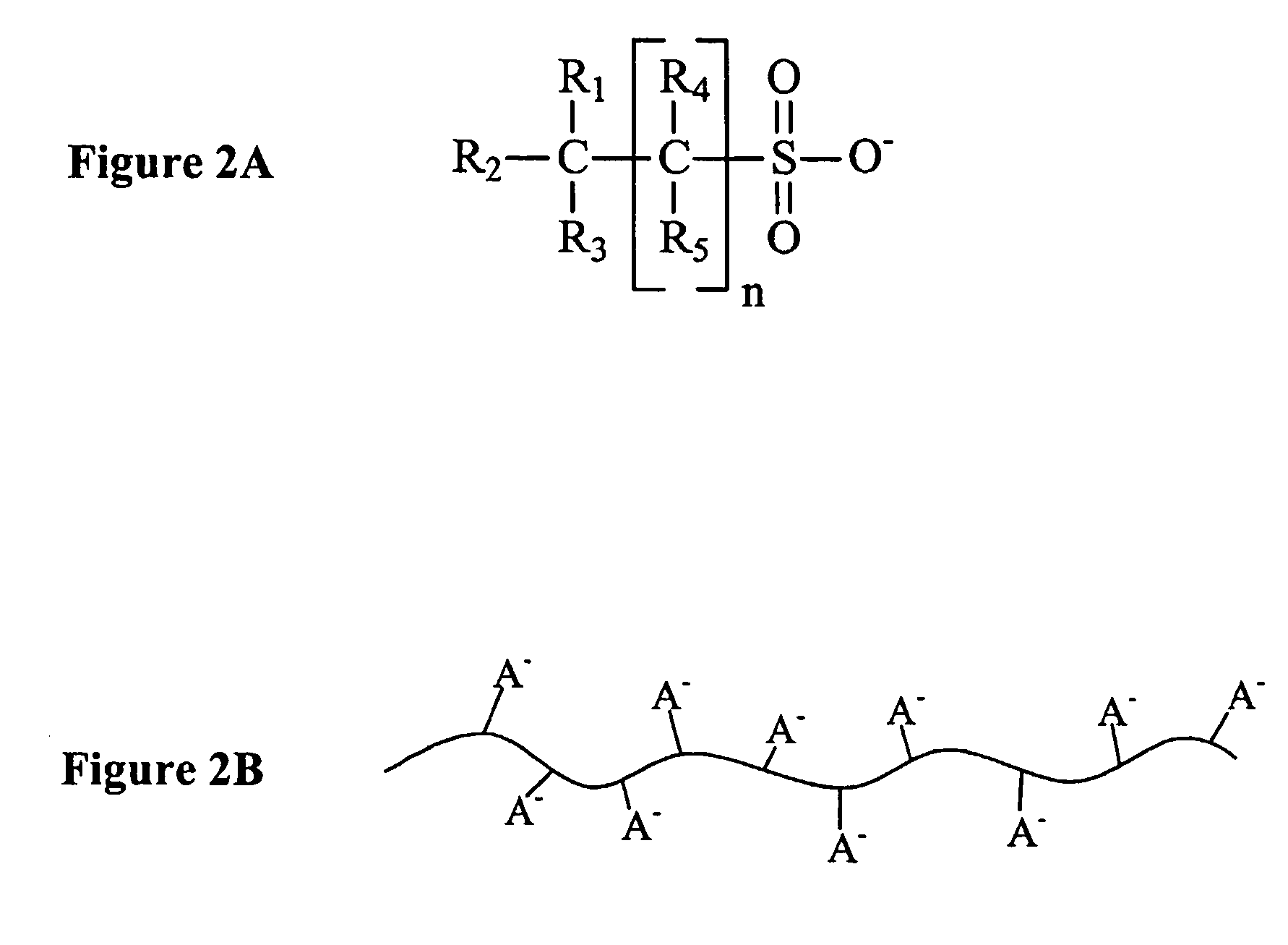Battery with gelled electrolyte
a battery and electrolyte technology, applied in the field of batteries and battery electrolytes, can solve the problems of sulfuric acid spillage from a typical lead-acid battery, poor power-to-weight ratio of commonly used zn/c batteries, and environmental health hazards
- Summary
- Abstract
- Description
- Claims
- Application Information
AI Technical Summary
Benefits of technology
Problems solved by technology
Method used
Image
Examples
Embodiment Construction
[0018]The inventors have discovered that an electric device (e.g., a battery) may include a gelled electrolyte comprising a complexed lanthanide that forms a redox pair with a second element. Alternatively or additionally, contemplated electric devices may comprise a gelled electrolyte in which a lanthanide (e.g., cerium) and a second element (e.g., zinc) form a redox pair in the electrolyte.
[0019]As used herein, the term “redox pair” is interchangeably used with the term “redox couple” and refers to a combination of a first element (or ion of the first element) and second element (or ion of the second element) in a battery, in which reduction of the first element and oxidation of the second element produce the current provided by the battery.
[0020]As also used herein, the term “acid electrolyte comprising a complexed lanthanide” means that the lanthanide (typically in ionic form) is bound in the acid electrolyte via a non-covalent bond to a compound (typically an anion or anionic g...
PUM
| Property | Measurement | Unit |
|---|---|---|
| viscosity | aaaaa | aaaaa |
| viscosity | aaaaa | aaaaa |
| dynamic viscosity | aaaaa | aaaaa |
Abstract
Description
Claims
Application Information
 Login to View More
Login to View More - R&D
- Intellectual Property
- Life Sciences
- Materials
- Tech Scout
- Unparalleled Data Quality
- Higher Quality Content
- 60% Fewer Hallucinations
Browse by: Latest US Patents, China's latest patents, Technical Efficacy Thesaurus, Application Domain, Technology Topic, Popular Technical Reports.
© 2025 PatSnap. All rights reserved.Legal|Privacy policy|Modern Slavery Act Transparency Statement|Sitemap|About US| Contact US: help@patsnap.com



